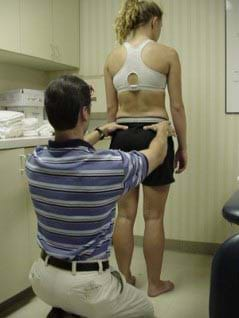
Physical Therapy for the Spine and Pelvis
Four out of five Americans will sustain an injury to their backs at some time in their lives. Of those, 90% will suffer a re-injury. We see a variety of neck and back issues including
- sprains and strains
- spondylosis (arthritis)
- stenosis (narrowing of spaces where nerves travel through)
- disc problems
Our treatments address your unique issue through manual therapy, individually designed exercise prescription, stretching programs, and modalities such as mechanical traction to decrease pain or nerve compression. Education on proper posture and body mechanics will also be part of your rehabilitation program.
 The sacroiliac joint (SIJ) is the place where the spine connects to the pelvis. This area is often overlooked with regards to its contribution to lower back pain. At Atlantic Physical Therapy, we have recognized experts who teach on this topic in universities and through educational seminars.
The sacroiliac joint (SIJ) is the place where the spine connects to the pelvis. This area is often overlooked with regards to its contribution to lower back pain. At Atlantic Physical Therapy, we have recognized experts who teach on this topic in universities and through educational seminars.
Evaluating the SI Joint begins by listening to your information on how the problem occurred to help to identify factors that may have contributed to your SIJ problems. There may have been an event that caused the problem, or it may have come from repetitive tasks associated with sport or work. In some cases it is due to being “loose jointed” (ligamentous laxity).
When we have this information, we then perform a specialized assessment that evaluates your pelvis and lower extremity alignment, and design a multifactorial treatment that includes comfort modalities, muscle energy techniques and an exercise program designed for your needs. The exercises will help you to restore symmetry, strengthen the muscles of the lower trunk and hips (the core), and decrease your pain.
While we work very closely with top surgeons to prevent the need for surgery, there are cases where neck or back surgery is necessary. We work with these patients in close communication with their surgeon to design programs that protect the surgery while restoring mobility, strength, and function. Together, we can help get you back to things you enjoy.